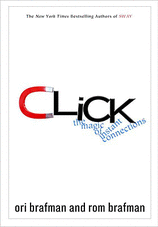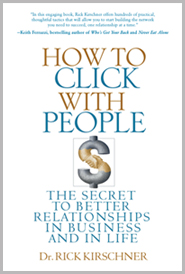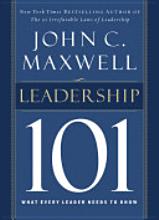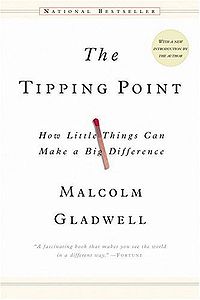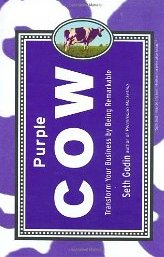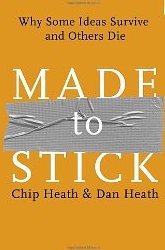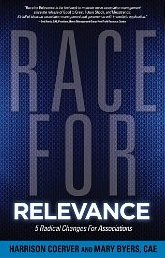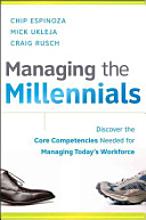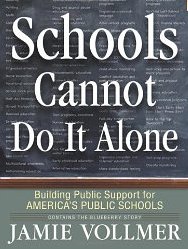|
|
Title: Click: The Magic of Instant Connections (2010) We’ve all experienced that special moment when we simply clicked with another person. Some might recognize it as love at first sight. Whatever it is, we could all benefit by being able to better recognize it, capitalize on it, and accelerate it when meeting new people. Afterschool leaders cannot afford to cluck or clack. The authors of Click: The Magic of Instant Connections (brothers Ori and Rom Brafman) draw on a variety of sources to find the facts behind instant connections. This book will equip you to better pick up on social cues and plan strategies that will help you create positive interactions with all kinds of people. We can’t collaborate effectively until we have mastered the skills of clicking. |
|
|
Title: How to Click with People (2011) Certainly a follow-up to the Brafman brothers’ book entitled Click, this book goes into deeper detail to help readers build better personal and professional relationships. Very easy to understand and implement. A regular practice of the skills taught in the book will result in anyone achieving a higher level of instant rapport with other people of all communication types, including those problem people with whom we never seem to be able to connect. |
|
|
Title: Leadership 101: What Every Leader Needs to Know (2002) Clear and concise, this book is part of a series of books with the “101” classification (attitude, ethics, relationships, teamwork, mentoring, etc.) by leadership guru John Maxwell. He focuses on essential and time-tested qualities necessary for true leadership—influence, integrity, attitude, vision, problem-solving, and self-discipline. This book is widely read in many collegiate programs for educational leaders. |
|
|
Title: The Tipping Point: How Little Things Can Make a Big Difference (2000) A bestseller that is an examination of the social epidemics that surround us. Readers will enjoy investigating the Law of the Few, The Stickiness Factor, and the Power of Context. Also of note is Gladwell’s description of how different kinds of people (connectors, mavens, and salesmen) play essential roles in creating social epidemics. |
|
|
Title: The Purple Cow (2002) A marketing bestseller, this book will equip afterschool program leaders with thought-provoking ideas about how they can create an afterschool program that stands out among others, delivers remarkable service, and creates a WOW factor for all participants and stakeholders. |
|
|
Title: Buy-In: Saving Your Good Idea from Getting Shot Down (2010) We’ve all had good ideas that we thought would be embraced with enthusiasm only to be shot down. This book will help you identify how naysayers deploy common tactics (death by delay, confusion, fear mongering, and character assassination) to sabotage your good ideas. The authors present a fictional story that all leaders can relate to as well as counterintuitive responses to attacks that can be practiced and used to gain and keep an advantage when driving change. |
|
|
Title: The Executive Director’s Survival Guide: Thriving as a Nonprofit Leader (2003) This book has chapters devoted to creating a vision, being a change agent, founder’s syndrome, staff relationships, board relationships, ad fiscal management. A must-read for anyone leading nonprofit organizations. |
|
|
Title: The Power of Music: Pioneering Discoveries in the New Science of Song (2011) Anyone committed to helping our children and youth explore the sciences will also want to read this book to discover how modern medical scientists are now closing in on the effects and power of music to heal, shape behavior, and expand the capacity to learn. Music is a transformative experience, and author Elena Mannes shows how modern science is explaining how and why that happens. |
|
|
Title: Collaboration: How Leaders Avoid the Traps, Create Unity, and Reap Big Results (2009) Hansen synthesizes more than a decade of research and explains the difference between what he calls good and bad collaboration. Although the book is written for business leaders, afterschool leaders will also find commonalities and applicability and benefit from the survey examples that can be used to self-reflect on collaboration and identify common barriers to collaboration with schools. |
|
|
Title: Education Nation: Six Leading Edges for Innovation in our Schools (2010) A dynamic vision for a new world of learning. Chen explains how six leading edges, the thinking edge, the curriculum edge, the technology edge, the time/place edge, the co-teaching edge, and the youth edge are challenging the inadequacies of the current education system. |
|
|
Title: Made to Stick: Why Some Ideas Survive and Others Die (2007) The authors present six essential qualities that any good idea must have to stick: simplicity, unexpectedness, concreteness, credibility, emotional, and stories. All of us have ideas and strategies we need to present. This book will help you get them to stick in others’ minds. |
|
|
Title: Race to Relevance: Five Radical Changes for Associations (2011) A look at the realities the professional associations are facing in the current decade. The authors cite case studies and years of experience to make their case for: 1) overhauling the governance models and committee operations of associations; |
|
|
Title: I Moved Your Cheese (2011) A thoughtful critique written by a Harvard Business School professor and bestselling author that uses the playful and highly accessible fable format found in the bestselling book, Who Moved My Cheese, to encourage readers to examine their deeply held assumptions and to take control of their own destiny.
|
|
|
Title: Managing the Millennials (2011) A valuable tool for anyone who wants to effectively manage and motivate twenty-something workers. Backed by years of serious research, Managing the Millennials provides managers of all ages with specific recommendations and tools for engaging this burgeoning demographic-some 78 million strong. Each chapter shares relevant interviews, case studies, and offers research-backed ideas and best practices to help any organization and their leaders address the challenges generational diversity presents. |
|
|
Title: Schools Cannot Do It Alone (2010) Schools Cannot Do It Alone tells of Jamie Vollmer's extraordinary journey through the land of public education. His experiences lead him to two critical discoveries. First, we have a systems problem, not a people problem. We must change the system to get the graduates we need. Second, we cannot touch the system without touching the culture of the surrounding town; everything that goes on inside a school is tied to local attitudes, values, traditions, and beliefs. Drawing on his work in hundreds of districts, Jamie offers teachers, administrators, board members, and their allies a practical program to secure the understanding, trust, permission, and support they need to change the system and increase student success. |


